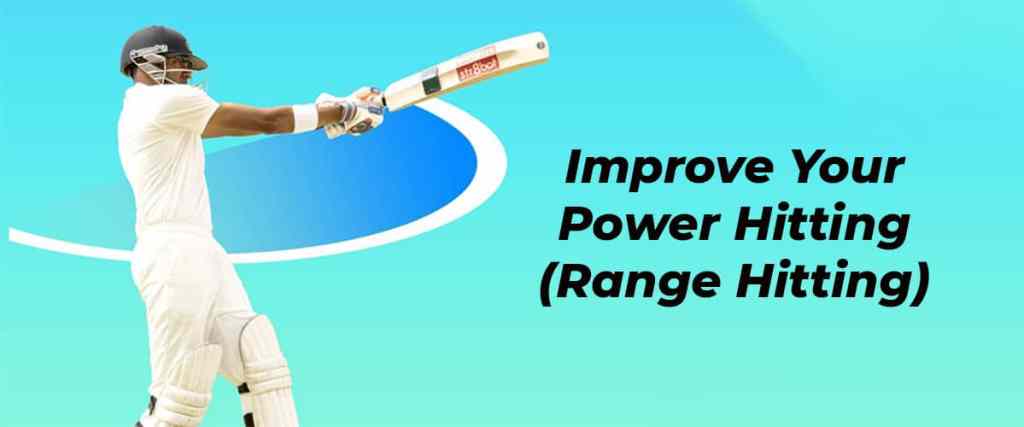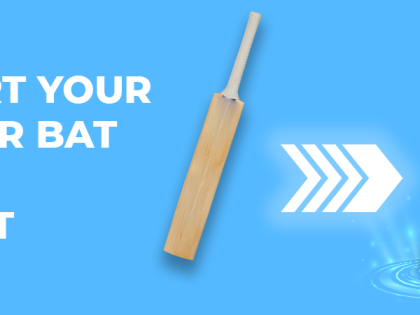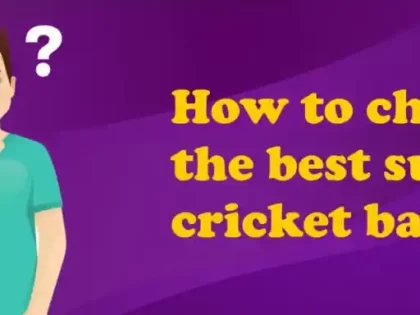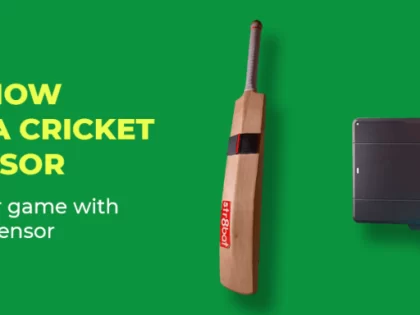Power Hitting (Range Hitting): Master The Skill Like A Pro

Who can forget Yuvraj Singh’s famous sixes? How beautifully he hit six sixes in a row that helped India qualify for the T20 2007 World cup semi-finals. Those power shots were beyond coincidence but the result of good Power Hitting (Range Hitting) technique.
Readers who follow our blogs religiously know how passionate we are about sharing cricket related know-how with our followers. The list can not be complete till we cover questions like – What is the power-hitting technique, and How to employ power-hitting in cricket?
What is Power Hitting or Range Hitting?
Hitting big sixes in cricket is generally referred to as Power Hitting or Range Hitting. So even if you want to know how to hit the big sixes, you need to follow the same guide.
A striker uses different types of techniques while batting on the pitch.Techniques of hitting singles doesn’t apply to power shots. Similarly, hitting the ball hard will not generate power hits alone.
Power Hitting is the physics of implying kinetic energy of the bat to release force to divert the direction of the incoming ball and hit it all through the boundary line.
Important Parameters for Power Hitting
Hitting a power shot is more of a science than art. One needs to understand key parameters that are involved in hitting a shot.
- Parameters related to bat
- Ball Impact
- Body Movement (Hand and Torso movements)
In our blog, we have broken down Power Hitting (Range Hitting) technique in three sub parts.
The 1st part is related to bats – science behind hitting big sixes by using batting parameters.
The 2nd part is related to understanding the ball delivery well.
And the 3rd part focuses on the importance of hip-torso-wrist power transformation.
Now let’s uncover them one by one.
Role of Batting Parameters in Power Hitting (Range Hitting)
Backlift

Backlift has a direct effect on power hitting. We lift the bat backwards during hitting a stroke and take it higher up to a point from where our downswing starts, called backlift or bat lift.
To be more precise, one can say that downswing starts once a bat reaches its highlight backlift level. Backlift can be of two types – Lateral or rotary backlift and straight backlift.
There is one more way to name backlift- High or Low backlift. Lateral and high backlift angles result in a longer downswing. Consequently, it generates more Power for hitting.
Take AB De Villiers’s example. While batting during T20 matches, he gave a noticeably higher backlift to his bat, with the downswing coming from the direction of fine leg. Due to kinetic energy, the bat generated power hits that regularly end up as sixers.
Bat Speed

Downswing speed or bat speed plays a critical role in power shots. When the batter brings the bat down, it has speed involved.
Similarly, an incoming ball has its own speed too ( which we will discuss later in detail). The bat and incoming ball both move in opposite directions and encounter each other at the impact point.
To give a desired direction to the ball, the Speed of the bat should be higher than the ball’s Speed. Consequently, the bat’s impact on the ball can empower it with a higher force and direct it in its desired direction for a powerful outcome.
A batter should have reasonable control over their bat speed to adjust to other factors like pitch conditions, ball speed, bat angle.
How to increase bat speed in cricket
There are ways to increase bat speed in cricket.
- Use heavy bat drill practice technique
- Keep higher backlift- with higher backlift bat speed will increase due to bat weight impact factor
- Strengthen the left hand’s (or whichever is your leading hand’s) muscles
- Focus on leg, arms, back and chest muscles while training to increase strength
- Use wearable technology sensors to analyze your bat speed improvements
These are some strategies that can help batters to increase their bat speed.
Impact Point
Physics again plays a role here. Impact points are crucial for hitting power shots. Not all impact points can dispatch the ball beyond the boundary line.
Downswing angle, bat speed, and ball speed all play a vital role in determining the bat’s ideal impact point with the ball. The closer the impact point to the sweet spot, the less or near to zero vibrations the bat will get, and in much the same way the quality of the shot will is better and more impactful.
Timing of the Shot
How can a batter hit from an ideal impact point? The answer lies in the timing of the shot.
A slight miss in the timing of the shot can miss the chance of power-hitting; instead, it can be dangerous enough to send the batter back to the pavilion.
In a nutshell, several factors lead to Power Hitting or Range Hitting. A batter needs to have good control on factors like bat Swing, bat speed, timing of the shot, impact point; There is an interdependence among these factors, and a good batter must enjoy a good command over it.
Role of the incoming ball in Power Hitting
We all know ,while a bowler delivers a ball, it comes in the direction of the batter at some speed.
Understanding the oncoming ball speed is a must. While at the crease, a batter faces spin, swing, yorkers, full toss balls. A bowler delivers the ball at various lines, lengths and speeds.
Wrong judgment can put the batter in danger. Thus, while practicing power-hitting ( range hitting), keep the ball’s oncoming Speed in mind.
As a skilled power hitter, you will not only empower that Speed with your own bat’s swing speed but use the ball’s kinetic energy to your benefit.
To become a good power hitter, a batter should use external factors like ball speed for their own benefit and loft it in the desired direction with remarkably High Speed.
Role of Hand and Torso in Power Hitting
British cricket coach Julian Wood claims power-hitting involves hip work more. As per Wood, kinetic energy flows from the back leg to hips, from hips to back and transit to the shoulder, elbow and hands.
As per his technique to hit power shots, the batter needs to realize that their wrists hold energy. For a power-hitting shot, the batter needs to hit the ball at the Speed of 90mph. But the question is, from where will the batter get this force?
So, Wood suggests that a batter needs to consider his hands different from the torso for power hitting. In simple words, generate Power from the hips and torso. With practice, the batter can learn to create the impact of this energy through his wrists. The batter will shift this Power to bat, and from bat, it will be applied to the ball, and result in a six.
Here is a link of complete training modules that can help cricket lovers to understand the science behind Power hitting well.
Some more relative key areas
Apart from the above technique, some other ways can help you in power hitting.
- Take a good batting stance, spread your legs wider to square up your body, foot facing the bowler; front leg little forward.The Head should be fixed, eyes on the ball.
- Bodyweight should be on the front foot.
- Use Power from the bottom hand; Hand- that is near the bat’s handle.
- While hitting the bat, put your front foot forward and rotate your hips to generate swing and Power.
- Practice more for active hand and eye coordination.
How to improve Power hitting (Range Hitting): Strategies
Use of Wearable Technologies in hitting big sixes
Nowadays, AI-backed wearable technologies are available in the market that can help batters work on desired areas. With the help of such innovative wearable technology, a batter can record, analyze and improve his or her shots. Several case studies support this claim well.
Relevance of fitness in hitting power shots
Although the strength of the arms, wrist, and torso is essential for hitting power shots. This is also true that while the upper body applies energy, a solid leg base provides stability. Thus, a batter must work on overall fitness and target all areas in muscle training.
Conclusion
In Today’s one day and T20 formats, power-hitting skill is indispensable. Once a batter gets good control on his or her batting parameters like backlift, bat speed, bat swing, the timing of the shot etc., they can start developing their techniques and styles of hitting a power shot.
Each batter knows which batting stance works for them most. So they experiment with it and create their signature power shots like Rohit Sharma’s pull shots for sixes, and Dhoni power-hitting with helicopter shots. But to reach that level, one needs to master the basics well.
The str8bat Cricket Bat Sensor is a Cricket Batting Buddy that allows you to play better by visually analyzing your batting stats and viewing your batting style in 360 degree 3D batting replays.
Remember, in the big picture of big hitting is having good control over the basics, which will indeed work in your favor.





